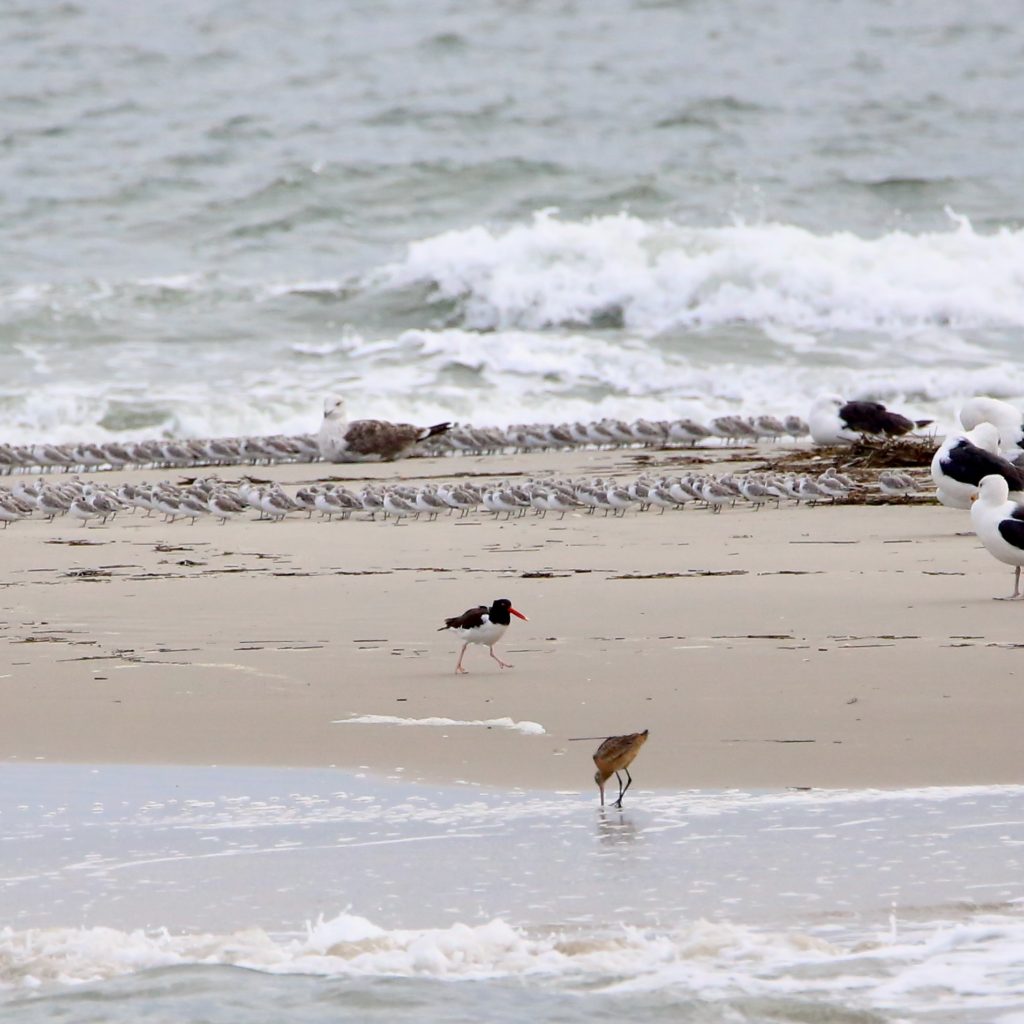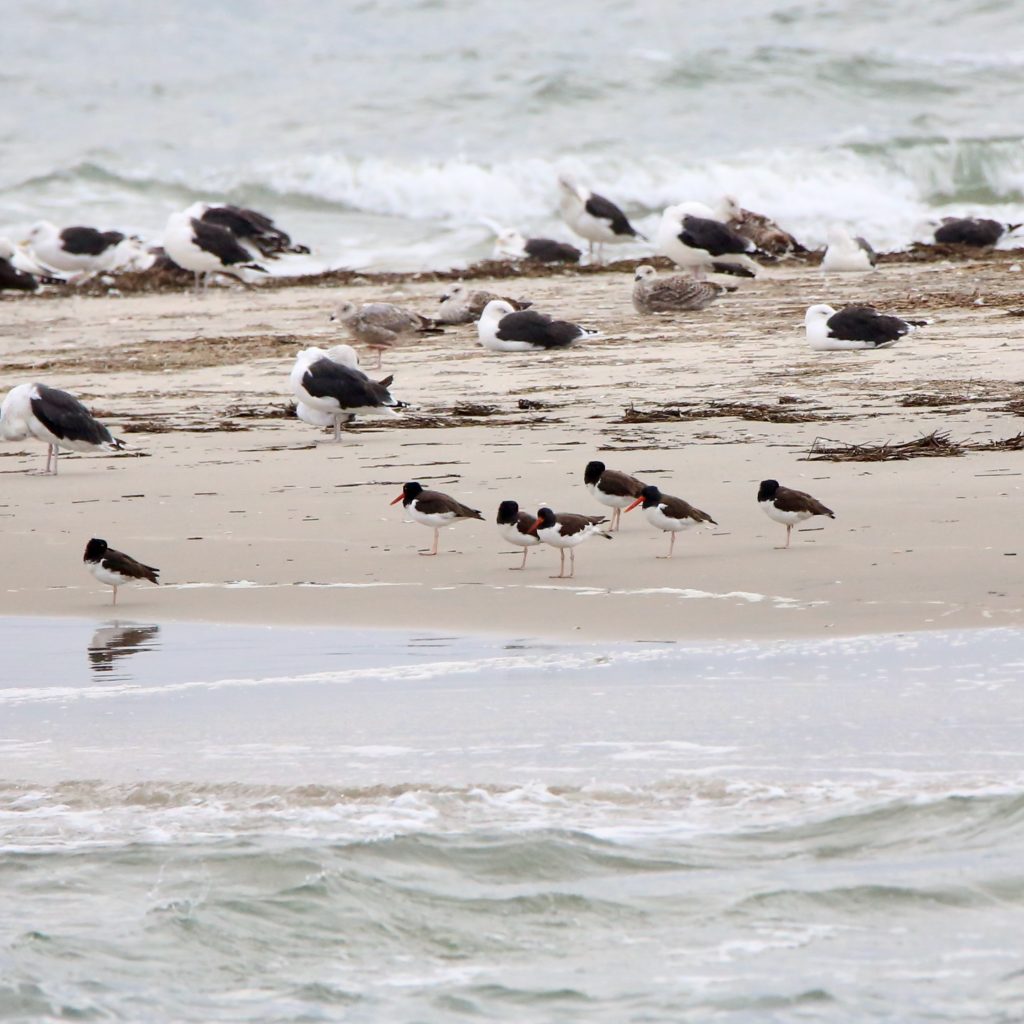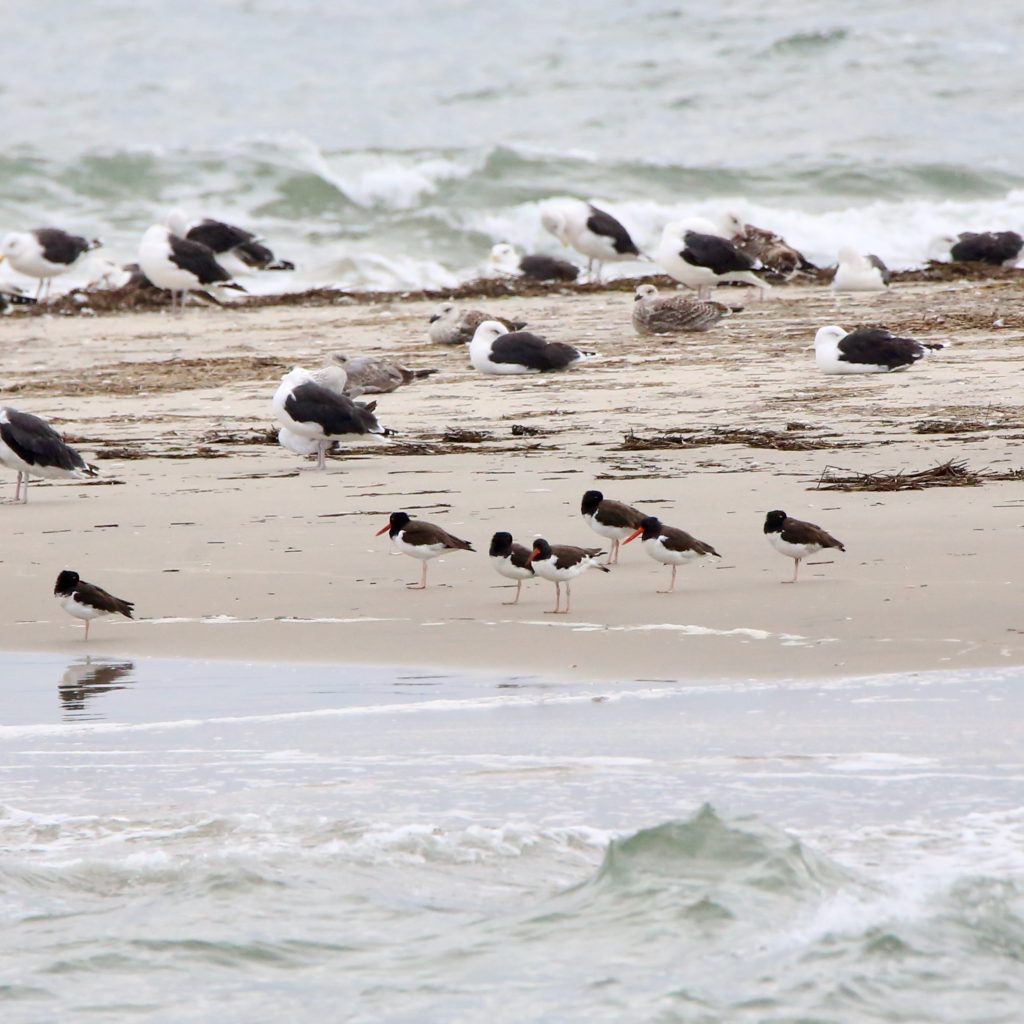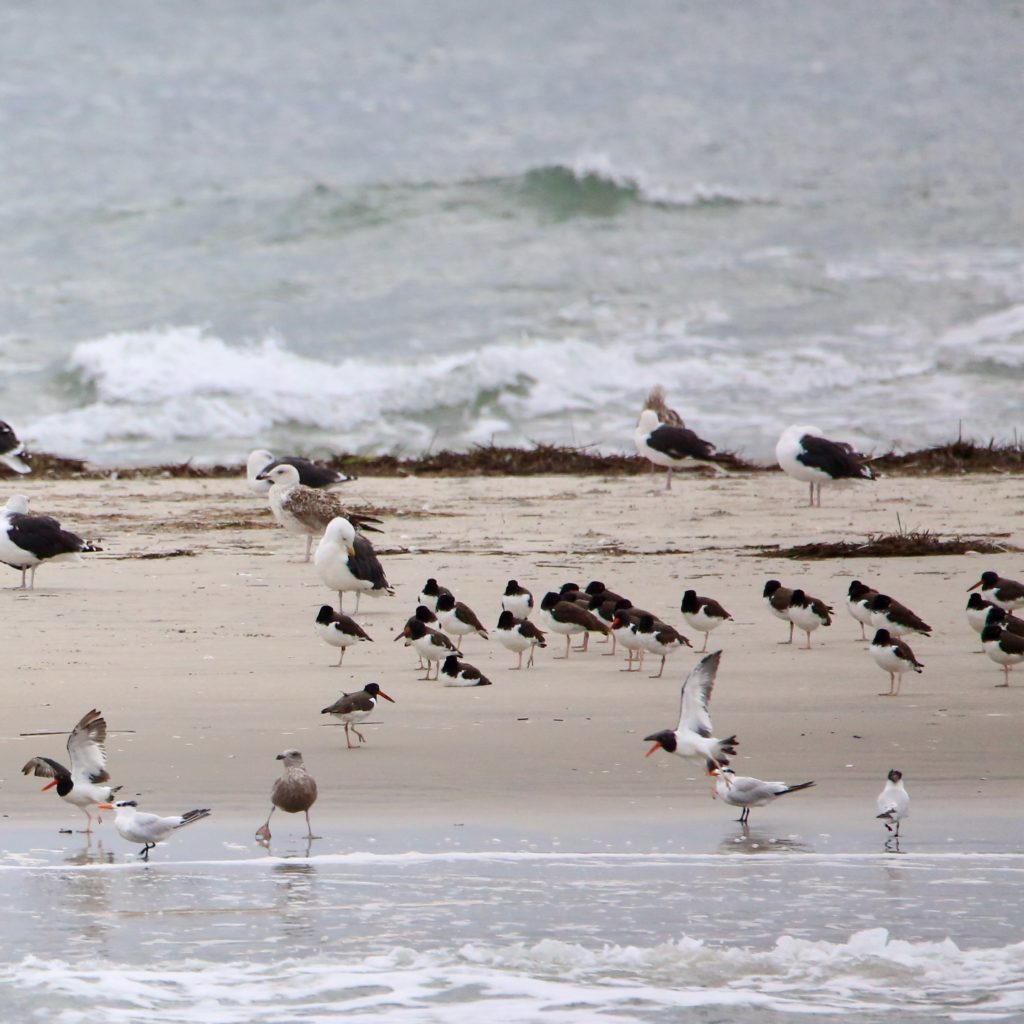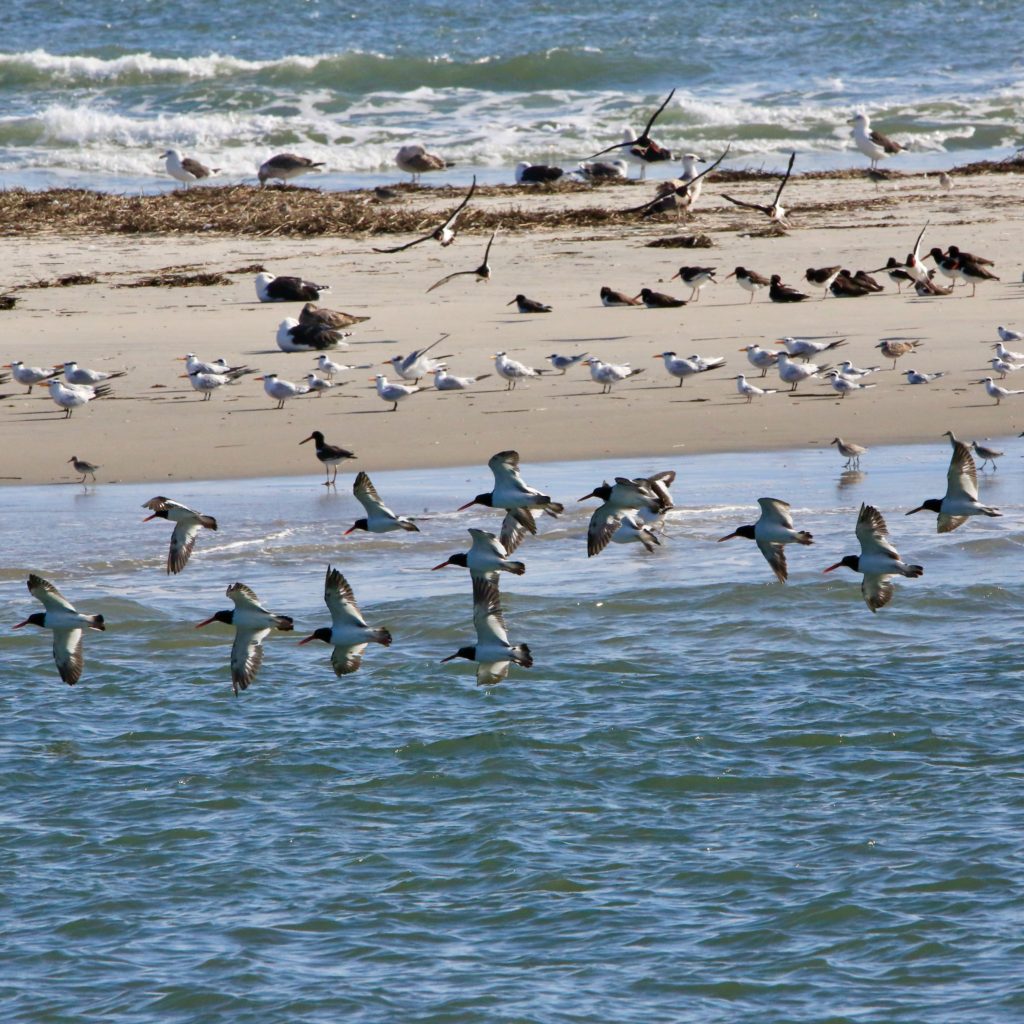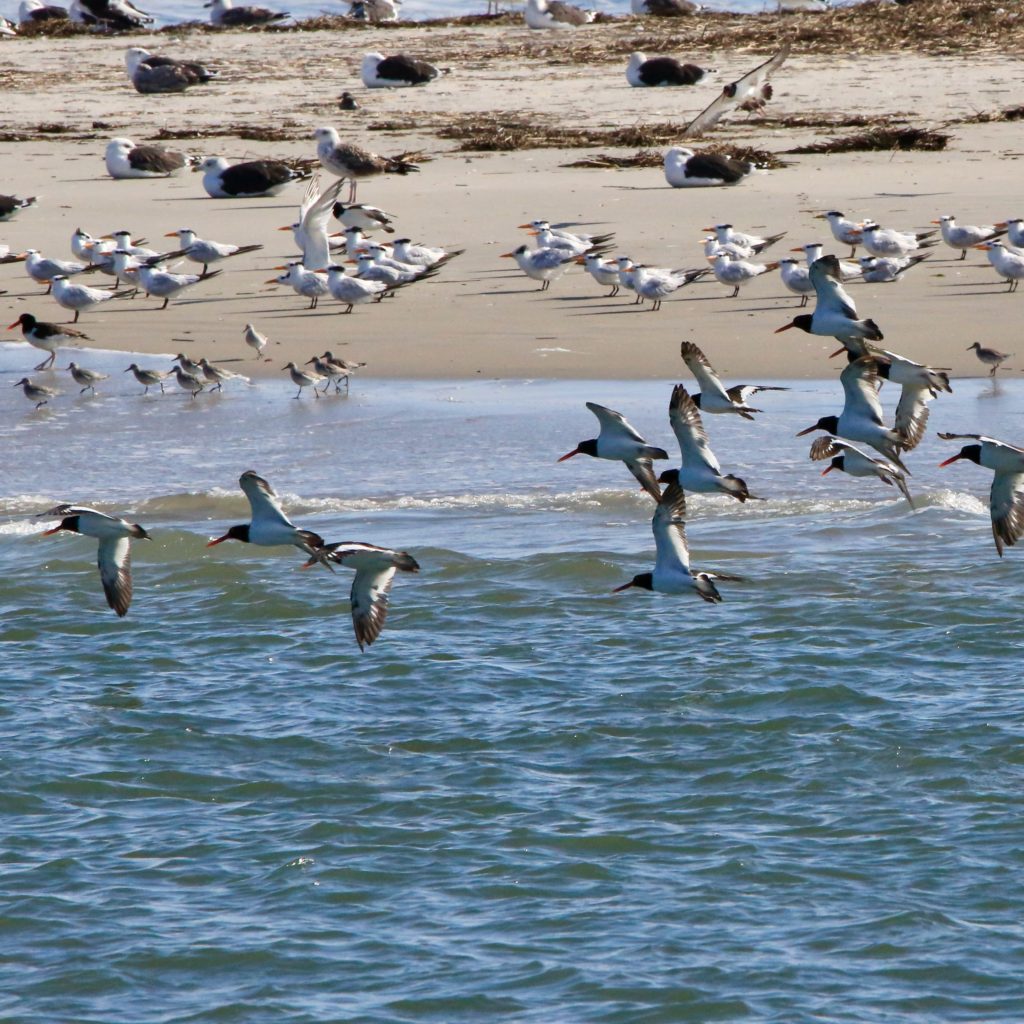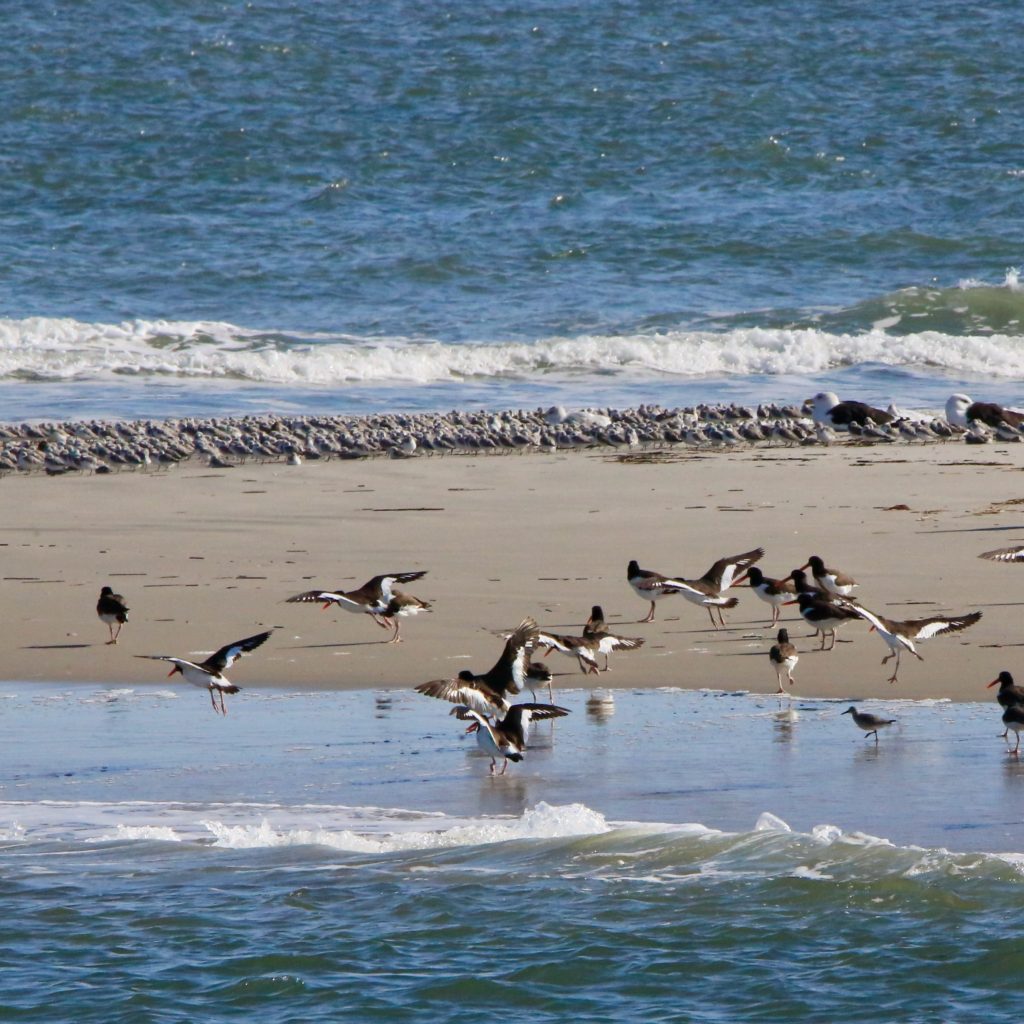
An American Oystercatcher is a fun bird to see while bird watching. Below are some tips to help you identify American Oystercatchers. We have also put together a list of fun American Oystercatcher t-shirts, American Oystercatcher bird patches, birdhouses, bird feeders, binoculars, stickers, and other fun bird-watching items.
About American Oystercatchers
The American Oystercatcher is a large boldly-patterned bird native to North America. It can also be referred to as the American Pied Oystercatcher but was originally called the Sea Pie. They breed along the Atlantic and Gulf Coasts of North America. Their numbers may have seriously declined in the 19th century but have since recovered in the 20th century. The decline was due to disturbance of their beach habitats but has since stabilized.
They can be found on the Atlantic Coast of North America spanning from New England to northern Florida. The bird has also been spotted in Argentina, Uruguay, and Brazil.
Description and Identification
These large, thickset shorebirds are 16–18 inches long and have large heads, robust necks, stout bills, and long, thick, and pink legs. These birds have distinctive black and white plumages with long, orange beaks. Their backs and wings are brown, while their heads and breasts are black with white underparts. They have white feathers on the inner parts of the wings that are only visible during flight. Their yellow irises are ringed with orange or red.
American Oystercatcher Color Pattern
It has a distinctive black and white plumage. Its upper body and wings are grayish black and white at the edges. Its long beak is red-orange and the same color can be seen surrounding the eyes. Its legs are pink.
American Oystercatcher Size
It is considered the largest shorebird in America with a body length of 40-44cm. The male weighs an average of 567g while the female is a bit heavier with a 638g average weight. They have a wingspan of about 89cm.
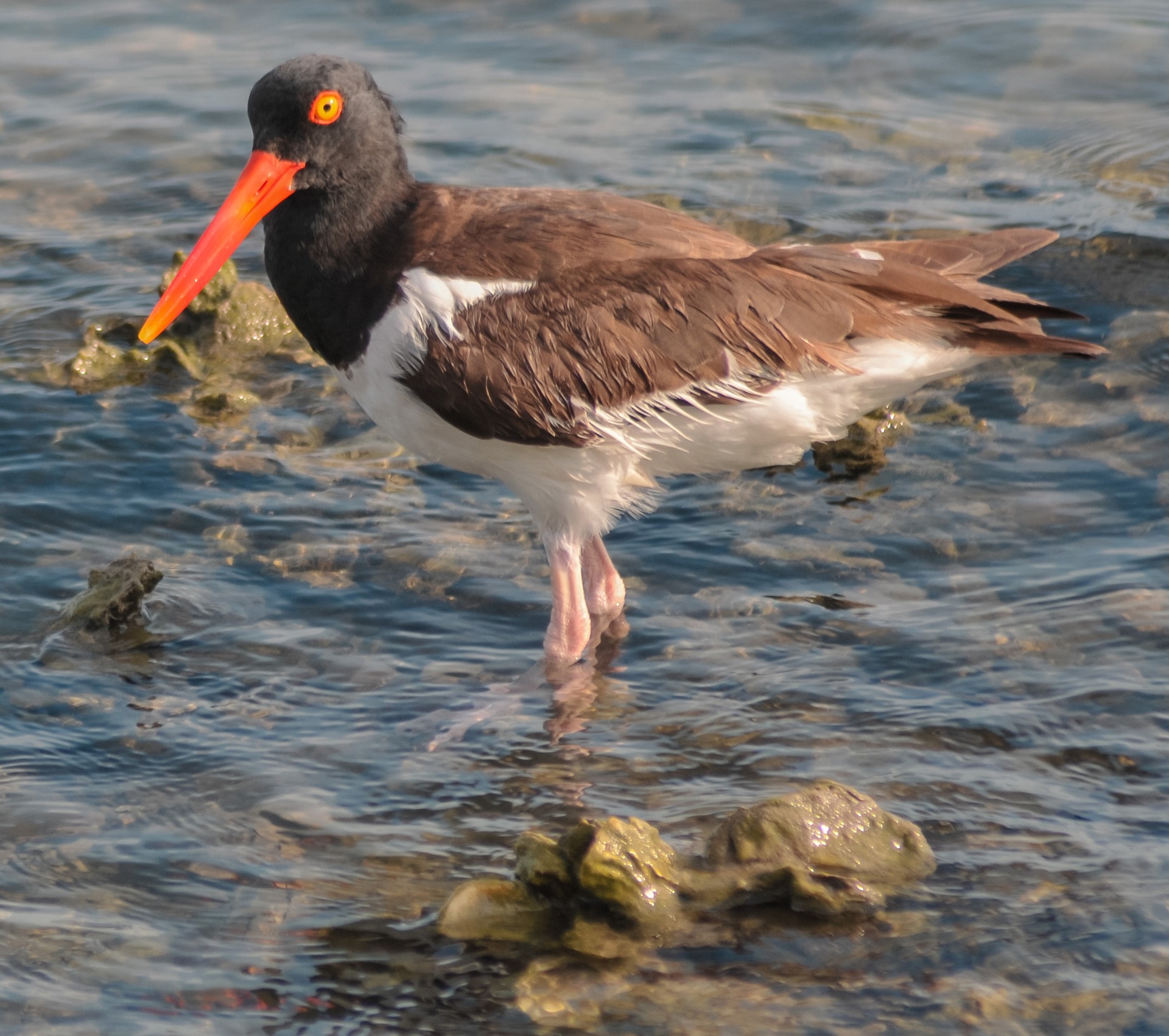
American Oystercatcher Behavior
Bird watchers cannot miss them in coastal habitats as that is the predominant point to catch their food. Nesting happens on beaches on coastal islands. The beak is adapted to opening bivalves.
American Oystercatcher Diet
These birds derive their namesake from their diet, and almost solely consume saltwater bivalve mollusks, including many species of clams, mussels, and oysters. They also consume limpets, jellyfish, starfish, sea urchins, marine worms, and a few crustaceans to a lesser degree. Their general way of finding is prey is through the use of their bills. They walk across shellfish beds and look for mollusks with partially opened shells that they can jab their bills into. This is done in order to sever the muscles that cause the shells to clamp shut and can thus get dangerous sometimes when the shells clamp down on their bills. Tightly rooted shells may hold a bird in place until the tides change, drowning the birds. They may also forage loose shellfish out of the water by hammering at shells or by probing in the sand. For bivalves like razor clams, mole crabs, and polychaete words, they probe into the substrate and capture their prey by touch. As a result, tidal conditions heavily influence when these birds forage. They forage the most heavily during falling tides.
It feeds exclusively on shellfish and other marine invertebrates found on the eastern coast of North America. The bird is accustomed to oysters hence its name the American Oystercatcher. They also feed on clams, limpets, crabs, starfish, sea urchins, and mussels.
American Oystercatcher Habitat
American Oystercatchers are found only in intertidal areas and in the adjacent beaches. They are especially abundant on barrier islands with few to no predators. Within such coastal habitats, they generally prefer sandy and shelly beaches for nesting but may also nest on sandy spots in saltmarshes or on mats of dead vegetation. Artificial beaches like dredge-spoil islands made of sand or gravel also attract these birds for nesting and roosting. During storms, they take shelter in open habitats in agricultural fields in surrounding areas.
You will find them strictly in coastal habitats which include coastal beaches and tidal flats. The American Oystercatcher can also be found in areas with extensive sandy beaches, salt marsh, and tidal mudflats. The key is having access to seafood supplies.
Range and Migration
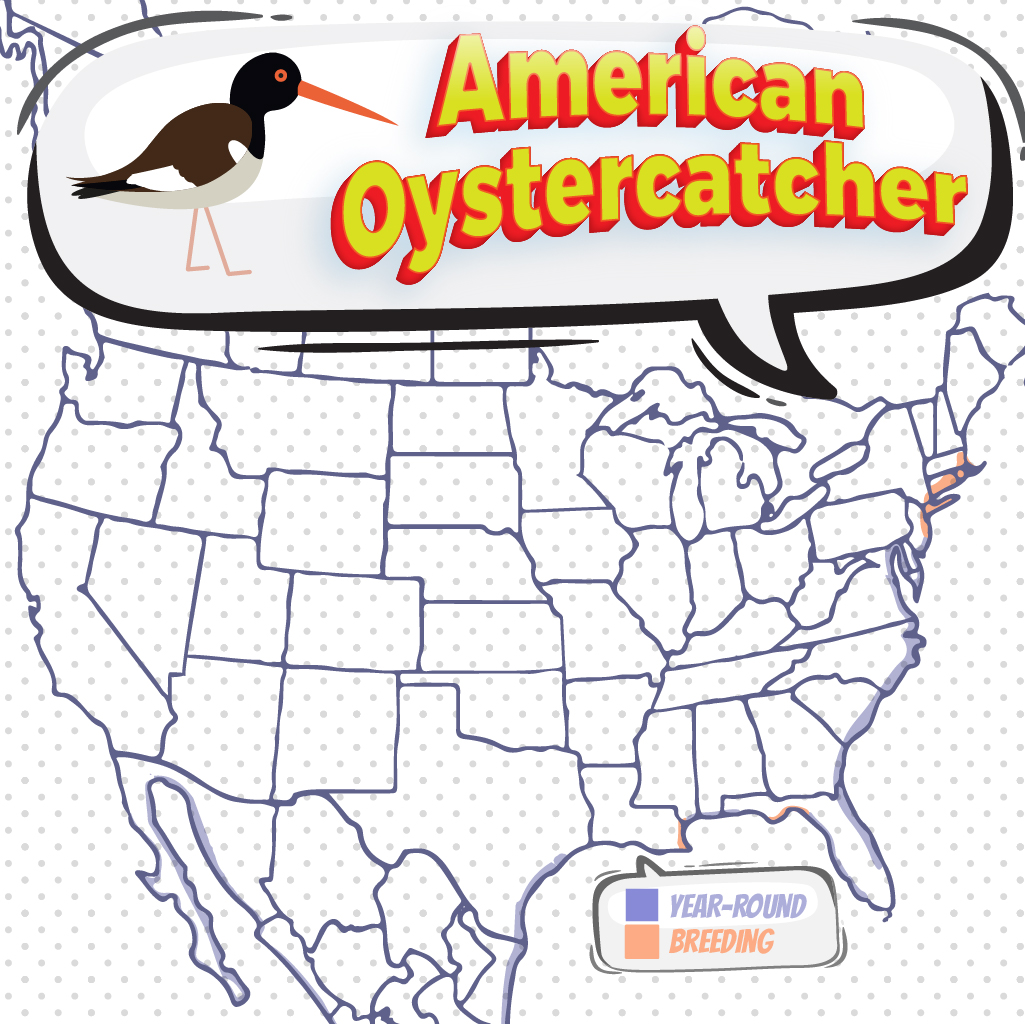
American Oystercatchers have boldly patterned shorebirds found along the Atlantic coasts of the United States, Mexico, and the Caribbean. They are also found along the pacific coasts of the Baja Peninsula, Mexico, and Central America. These birds are generally residents of their breeding grounds and rarely migrate, except for short distances that the northernmost populations may undertake during winter. They are abundantly found in flocks from Massachusetts to the Gulf of Mexico.
American Oystercatcher Lifecycle
Females can lay up to 4 eggs which they keep incubated for 24-28 days when they hatch. The young ones are fed with both parents for about 2 months and would sometimes attempt to forage on their own. The young take the first flight at 5 weeks. An adult American Oystercatcher may reach the age of 10 years and above.
Nesting
Nesting sites are selected by the females in vegetation on barrier beaches, usually within or behind dunes. They can also be found nesting in shelly islands, dredge-spoil islands, or on high marshes. The nesting sites typically feature dune vegetation such as sea oats and beach grass and can be often found among short bushes and shrubbery. In artificial beaches or in urban areas, pairs have been found nesting on gravel rooftops or on rocky, artificial islands. These nests are generally simple depressions in the sand with no lining at all. A female has 1–2 broods each season and can lay between 2–4 eggs in a clutch.
Ornithology
Bird Watching Academy & Camp Subscription Boxes
At the Bird Watching Academy & Camp we help kids, youth, and adults get excited and involved in bird watching. We have several monthly subscription boxes that you can subscribe to. Our monthly subscription boxes help kids, youth, and adults learn about birds, bird watching, and bird conservation.
- Kids Bird Watching Monthly Subscription$10.00 / month
- Kid & Adult Bird Watching Starter Pack Subscription$10.00 / month and a $72.00 sign-up fee
- Kids Bird Watching Starter Pack Subscription$10.00 / month and a $19.00 sign-up fee
Bird Watching Binoculars for Identifying American Oystercatchers
The most common types of bird watching binoculars for viewing American Oystercatchers are 8×21 binoculars and 10×42 binoculars. Bird Watching Academy & Camp sells really nice 8×21 binoculars and 10×42 binoculars. You can view and purchase them here.
- Birding Binoculars$49.99
- Kids Binoculars$13.99
American Oystercatcher T-shirts
If you love the American Oystercatcher you should purchase a Bird Watching Academy & Camp T-shirt. To help support bird conservation we donate 10 percent to bird conservation activities.
American Oystercatcher Iron On Patches
Kids, Youth, and Adults love to collect our Bird Watching Academy & Camp iron-on patches. Our bird-watching patches help you keep track of the birds you have seen and identified. You can also display the patches on our Bird Watching Academy & Camp banners.
The American Oystercatcher is a great iron-on patch to start your collection with. The patches are durable and can be sewn on or ironed on to just about anything.
- American Oystercatcher Iron on Patch$2.99
- Bird Banner$10.99
American Oystercatcher Stickers
Stickers are a great way for you to display your love for bird watching and the American Oystercatcher. We sell a monthly subscription sticker pack. The sticker packs have 12 bird stickers. These sticker packs will help your kids learn new birds every month.
Bird Feeders For American Oystercatcher
There are many types of bird feeders. Bird feeders are a great addition to your backyard. Bird feeders will increase the chances of attracting birds drastically. Both kids and adults will have a great time watching birds eat at these bird feeders. There are a wide variety of bird feeders on the market and it is important to find the best fit for you and your backyard.
Best Bird Houses For American Oystercatcher
There are many types of birdhouses. Building a birdhouse is always fun but can be frustrating. These 4 birdhouses have become our favorites. Getting a birdhouse for kids to watch birds grow is always fun. We spent a little extra money on these birdhouses but they have been worth the higher price and look great.


